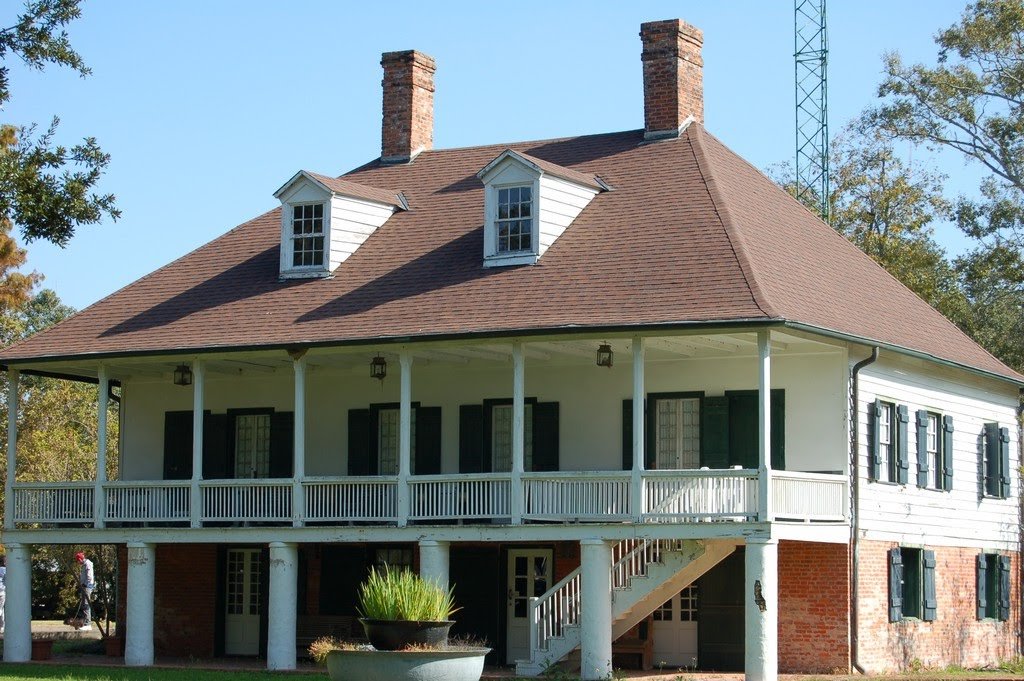#3142. Classic Two-Story Colonial Facade with Brick Foundation and Wrap-Around Veranda
Before us stands an impressive example of colonial architecture, represented by a two-story house with a characteristic elevated construction. The facade of the building features symmetry and strict proportions that were typical for colonial structures of the 18th-19th centuries.
Particular attention is drawn to the extensive columned veranda that wraps around the entire perimeter of the upper floor. The white wooden pillars of the veranda create an elegant contrast with the brick foundation of the lower level. The external staircase leading to the second floor serves as both a functional and aesthetic element of the composition.
The roof has a classic hipped design with two symmetrically placed dormer windows on the front side. The structure is crowned by two massive brick chimneys that emphasize the historical authenticity of the building. Dark green shutters on white walls create a characteristic colonial appearance and add visual interest to the facade.
The lower floor is made of red brick, which was a practical solution for protection against moisture and creating a solid foundation, while the upper floor is clad with white wooden panels. This combination of materials is typical for southern plantation houses built with consideration for the climatic features of the region.
